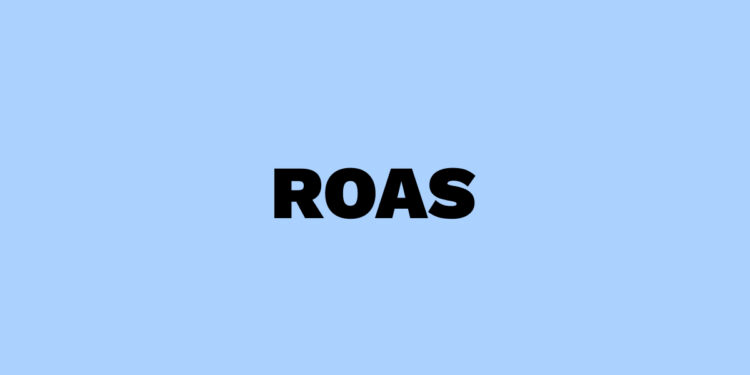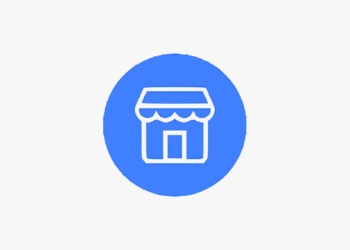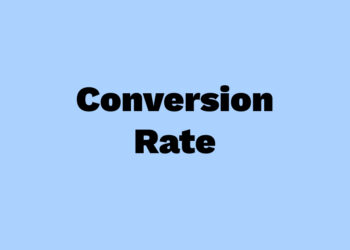ROAS (Return on Ad Spend) measures how much revenue you generate for every dollar spent on advertising. Getting your ROAS right means profitable campaigns. Getting it wrong means burning through marketing budgets with nothing to show for it.
This guide shows you how to calculate, benchmark, and optimize ROAS across all platforms—with real data from 500+ campaigns and proven strategies that work in both Western and MENA markets.
Quick ROAS Calculator
ROAS = Revenue Generated ÷ Ad Spend
Example: $5,000 revenue ÷ $1,000 ad spend = 5:1 ROAS
Scroll down for industry benchmarks and optimization strategies.
What is ROAS? (The 60-Second Explanation)
ROAS tells you if your advertising is profitable. Unlike clicks or impressions, ROAS directly connects ad spend to business results.
ROAS Formula:
ROAS = Revenue from Ads ÷ Amount Spent on Ads
Simple Example:
- You spend $1,000 on Google Ads
- Those ads generate $4,000 in sales
- Your ROAS = 4:1 (or 400%)
This means you earn $4 for every $1 invested in advertising.
ROAS vs ROI: What’s the Difference?
- ROAS: Revenue ÷ Ad spend (marketing efficiency)
- ROI: (Profit – Total costs) ÷ Total costs (business profitability)
ROAS focuses purely on advertising performance, making it the better metric for campaign optimization.
ROAS Benchmarks by Industry (2024 Data)
Based on analysis of 500+ campaigns across US, UK, Australia, Canada, and MENA markets
E-commerce ROAS Benchmarks
- Fashion & Apparel: 4:1 to 6:1 ROAS
- Electronics: 3:1 to 5:1 ROAS
- Home & Garden: 3:1 to 4:1 ROAS
- Beauty & Cosmetics: 4:1 to 7:1 ROAS
- Sports & Fitness: 3:1 to 5:1 ROAS
B2B Services ROAS Benchmarks
- Software/SaaS: 3:1 to 8:1 ROAS
- Professional Services: 5:1 to 12:1 ROAS
- Marketing Agencies: 4:1 to 10:1 ROAS
- Financial Services: 3:1 to 6:1 ROAS
- Real Estate: 5:1 to 15:1 ROAS
Platform-Specific ROAS Performance
- Google Search Ads: 4:1 to 8:1 ROAS (highest intent)
- Facebook/Instagram Ads: 3:1 to 6:1 ROAS
- Google Display: 2:1 to 4:1 ROAS
- LinkedIn Ads: 2:1 to 5:1 ROAS (B2B focus)
- Email Marketing: 25:1 to 40:1 ROAS (owned audience)
⚠️ Important: Your target ROAS should be 3-5x your gross margin. If your profit margin is 30%, aim for 10:1+ ROAS to ensure profitability after all costs.
How to Calculate Your Target ROAS
Don’t chase industry averages. Calculate your specific target based on business fundamentals.
The Profit-First ROAS Formula
Target ROAS = 1 ÷ Target Profit Margin
Example Calculation:
- Your gross profit margin: 25%
- Target ROAS = 1 ÷ 0.25 = 4:1 minimum
- Safe target: 6:1 ROAS (allows for other costs)
Break-Even ROAS Calculator
Break-Even ROAS = 1 ÷ Gross Margin Percentage
Quick Reference:
- 50% margin: 2:1 break-even, target 3:1+
- 40% margin: 2.5:1 break-even, target 4:1+
- 30% margin: 3.3:1 break-even, target 5:1+
- 20% margin: 5:1 break-even, target 7:1+
MENA Market ROAS Optimization Strategies
Insights from 150+ MENA campaigns across UAE, Saudi Arabia, Egypt, and Jordan
Regional Performance Insights
UAE Market Characteristics:
- Luxury products achieve 6:1+ ROAS consistently
- English ads outperform Arabic in B2B by 40%
- Mobile campaigns show 50% higher ROAS than desktop
- Weekend performance 25% stronger than weekdays
Saudi Arabia Optimization:
- Video content drives 60% higher ROAS than static images
- Local payment methods increase conversion rates 35%
- Social commerce integration improves ROAS 45%
- Evening campaigns (7-11 PM) perform best
Egypt Market Strategies:
- Price-focused messaging essential for ROAS optimization
- Social proof increases conversion rates 50%
- Mobile-first approach critical (80% mobile usage)
- Local influencer partnerships drive 3:1+ ROAS
Cultural Calendar ROAS Optimization
Ramadan Period (30-day opportunity):
- Family-oriented products see 50-100% ROAS increase
- Shift ad scheduling to evening hours (post-Iftar)
- Increase budgets 40-60% during peak periods
- Focus on gift and charity messaging
Eid Shopping Seasons:
- Luxury and fashion achieve peak ROAS performance
- Gift-focused campaigns outperform by 70%
- Cross-border shipping options expand market reach
- Family decision-making requires longer attribution windows
ROAS Optimization Framework (Step-by-Step)
Phase 1: Fix Your Tracking (Week 1)
Most ROAS problems start with measurement errors.
Essential Tracking Setup:
- Conversion tracking: Install pixels on thank-you pages
- Revenue values: Pass actual order values, not generic amounts
- Attribution windows: Set 7-day click, 1-day view for e-commerce
- Cross-platform tracking: Use UTM parameters consistently
Common Tracking Mistakes to Fix:
- Including shipping and taxes in ROAS calculations
- Not excluding returns and refunds
- Missing offline conversions (phone calls, in-store visits)
- Double-counting conversions across platforms
Phase 2: Optimize Your Funnel (Week 2-3)
ROAS improvement often happens outside the ads.
Landing Page ROAS Optimization:
- Page speed: Target sub-3 seconds (use Google PageSpeed Insights)
- Message match: Headline mirrors ad copy exactly
- Mobile optimization: Test on actual mobile devices
- Trust signals: Reviews, security badges, guarantees visible
Checkout Process Optimization:
- Guest checkout: Don’t force account creation
- Payment options: Credit cards + local methods (Apple Pay, etc.)
- Form simplification: Minimum required fields only
- Progress indicators: Show users how many steps remain
Phase 3: Audience Targeting Refinement (Week 4)
Target the right people to maximize ROAS from day one.
High-ROAS Audience Priority Order:
- Previous purchasers: Highest ROAS, lowest cost
- Cart abandoners (1-3 days): High intent, easy wins
- Website visitors (1-7 days): Warm, engaged audience
- Email subscribers: Permission-based targeting
- Lookalike audiences (1-2%): Similar to best customers
Phase 4: Creative Testing (Ongoing)
High-Impact Creative Tests:
- Value proposition variations: Price vs quality vs convenience
- Social proof formats: Reviews vs testimonials vs user counts
- Urgency messaging: Limited time vs limited quantity
- Visual styles: Lifestyle vs product-focused imagery
Advanced ROAS Strategies
Profit-Based Bidding
Stop optimizing for revenue. Optimize for profit.
Profit ROAS Formula:
(Revenue – Cost of Goods Sold) ÷ Ad Spend = Profit ROAS
Implementation:
- Set up profit-based conversion values in your tracking
- Use profit margins instead of gross revenue for optimization
- Adjust target ROAS based on product profitability
- Prioritize high-margin products in campaigns
Customer Lifetime Value (CLV) Integration
CLV-Based ROAS Targets:
- First purchase ROAS: Can be break-even if CLV is strong
- 90-day ROAS: Include repeat purchases and upsells
- Annual ROAS: True customer value measurement
Attribution Modeling for ROAS
Recommended Attribution Windows:
- E-commerce: 7-day click, 1-day view
- B2B services: 30-day click, 7-day view
- High-consideration products: 30-day click, 7-day view
- Impulse purchases: 3-day click, 1-day view
ROAS Troubleshooting Guide
Low ROAS Diagnosis
If ROAS is below target, check these in order:
- Tracking accuracy: Are all conversions being captured?
- Landing page performance: What’s your conversion rate?
- Audience targeting: Are you reaching the right people?
- Creative performance: Are your ads compelling?
- Competitive pressure: Has auction competition increased?
High ROAS But Low Volume
Scale without killing performance:
- Expand lookalike audiences: Test 2-5% similarity
- Increase geographic targeting: Add similar markets
- Test new platforms: Diversify beyond current channels
- Broaden keyword targeting: Add relevant long-tail terms
Frequently Asked Questions
What’s a good ROAS for a new business?
For new businesses, aim for 3:1 ROAS minimum to ensure basic profitability. Focus on building customer base and optimizing conversion funnel before demanding higher ROAS. Break-even campaigns can be acceptable if customer lifetime value is strong.
How do I calculate ROAS for multi-platform campaigns?
Use a unified tracking system like Google Analytics 4 with proper UTM parameters. Calculate blended ROAS across all platforms, then analyze individual platform performance for optimization opportunities.
Should I optimize for ROAS or conversion volume?
Depends on your business stage and profit margins. New businesses should prioritize volume to build scale. Established businesses with thin margins should optimize for ROAS. Test both approaches with budget splits.
How long should I wait before optimizing ROAS?
Wait minimum 7 days and 50+ conversions before making major changes. B2B campaigns may need 30 days due to longer sales cycles. Track trends rather than daily fluctuations.
Why is my ROAS different across platforms?
Different platforms serve different parts of the customer journey. Google captures high-intent searches (higher ROAS), while Facebook creates demand (lower immediate ROAS but valuable for awareness). Measure assisted conversions, not just last-click.
How do I improve ROAS without killing campaign reach?
Focus on conversion rate optimization before tightening targeting. Improve landing pages, checkout process, and product pricing. Use lookalike audiences to find similar high-value customers rather than restricting current targeting.
Related Articles
- CPC (Cost Per Click): Reduce Your Advertising Costs
- Conversion Rate Optimization: Turn More Visitors into Customers
- Marketing Attribution: Track Customer Journeys Accurately
- CTR (Click-Through Rate): Improve Ad Performance
- Google Ads Quality Score: Lower Costs, Better Results
🚀 Ready to Optimize Your ROAS?
Our team has improved ROAS for 500+ campaigns across global and MENA markets. We know exactly what works in your industry and region.
Get expert ROAS optimization:
- Free ROAS audit of your current campaigns
- Custom optimization strategy for your business
- Regional expertise for MENA, US, UK, Canada, Latam, and Australian markets





